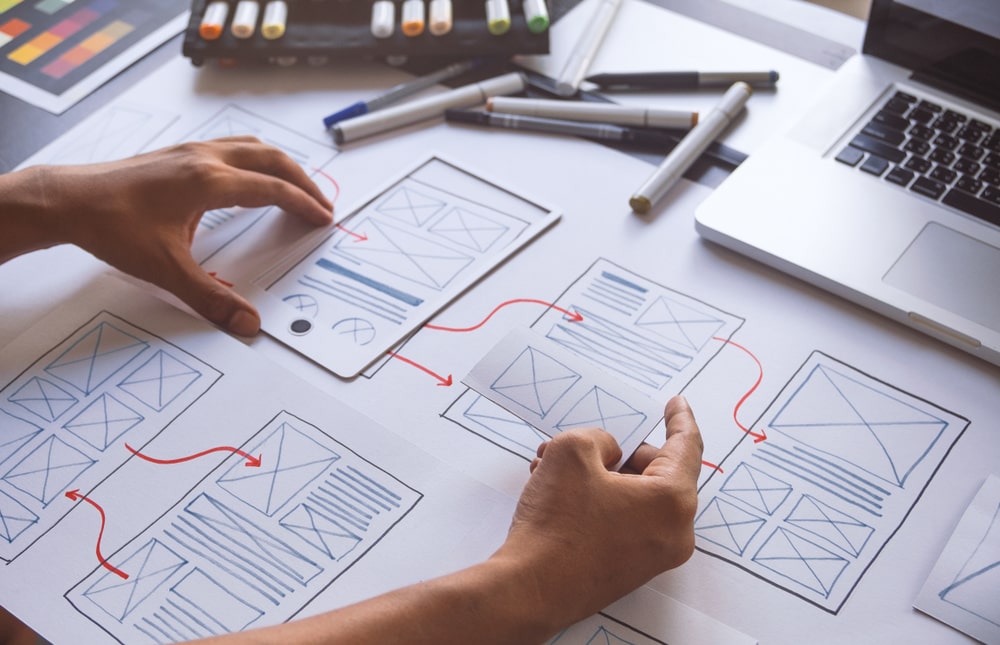User Experience (UX) is one of the foremost considerations when building a website. Cultivating and maintaining excellent UX goes a long way in building trustworthiness with an audience. Not only does it leave a better impression on a site’s users, but the person or group behind the page reaps plenty of benefits, too.
By building a solid UX, you learn a lot of information about your audience. Their wants, needs, and expectations all go into crafting the User Experience to keep them engaged with the website. Poor UX can harm a site’s credibility and usefulness (not to mention tank its ranking), so improving it makes a major difference.
What Counts as UX?
Before diving into the tips segment, it’s important to understand what is (and isn’t) part of the User Experience. The common components of UX are:
- Functionality – For a website to be functional, it should be consistent, easy to use, and have some level of intuitive design. If visitors can’t figure out how to move between pages, find it difficult to locate what they’re looking for, or get confused by the appearance, they won’t stick around.
- Credibility – Users have to feel safe while visiting a website. The appearance of a website matters, as people won’t stay on a site that looks questionable, and security certificates also help.
- Interaction – Chatbots, automated responses, and forms to get to human interaction all qualify as interaction and serve different purposes.
Tips to Improve User Experience
As UX becomes more important in website design, new tools, trends, and techniques arise. Here’s a look at a few of the most popular UX-focused website elements.
Large Fonts
To say that accessibility is important is an understatement. For a good UX, it’s a must. Large font sizes mean everything is easily visible to a wide range of people. Scale up titles, headlines, and other text to improve how people view your website.
It makes things easier to navigate and, in turn, more functional. Accessibility is even a legal requirement in places like the EU, so orienting your website design to accommodate it won’t hurt.
Light and Dark Mode
Plenty of things offer light and dark mode options now, from Chromebooks to iPhones. Your website should, too. Dark mode emits less blue light, is easier for users with vision issues or impairments, and is better suited for people browsing at night.
As dark mode gains traction everywhere, not offering it means your site lags behind. Not only is the UX negatively impacted, but you’ll fall behind any competition incorporating it. It’s hard to ignore a feature that 80% of people use at one point or another.
Mobile Optimization
Five billion people use smartphones to access the internet. If you look at the total number of internet users, that means 60% of them are on mobile. Running a website that is clunky (or even impossible) to navigate on mobile will drive users away. That isn’t just a possibility – it’s practically a guarantee.
One of the best ways to optimize for mobile is to use responsive design. Responsive Web Design ensures that pages load and perform well across platforms and sizes, whether they’re accessed from large desktop monitors or small smartphone screens. It increases website speed, which is a huge bonus since people won’t wait on slow-loading pages.
In addition to improving the UX, Google also holds mobile-friendly sites in high esteem. If your website is easy to navigate for mobile users, it ticks an important box for higher search engine rankings.
Improve Loading Times
This point is partly related to mobile optimization but applies to any website viewed on a desktop. Page loading times are crucial for good UX. Over half of all online shoppers say they leave pages that take longer than three seconds to load, and it’s fair to say that statistic applies to internet users as a whole.
RWD, as mentioned above, can go a long way toward improving page load speeds. Optimizing media sizes helps, too. Certain file types (like .webp) take up less space and load more quickly.
Include a progress bar if you have a lot of content or animations on your page and wait times are over a few seconds. It shows users what they can expect and reminds them the content is coming.
Final Thoughts
UX design is here to stay. Do your research and fill in any gaps on your website now. Accessibility, mobile optimization, and fast loading times are some of the main priorities for a great user experience, but it’s a constantly evolving concept.
